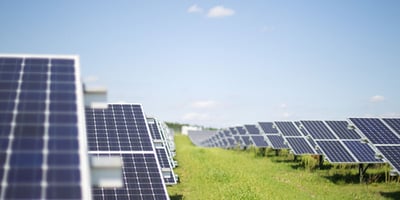According to the International Energy Agency (IEA), renewable capacity has significantly increased,...
Mitigating Physical Climate Risks: A Guide for Investor-Owned Utilities
Investor-owned utilities (IOUs) are encountering a growing threat from physical climate risks, necessitating an unwavering commitment to grid reliability. As the world grapples with the repercussions of climate change, IOUs must embrace innovative technologies and strategies to fortify grid reliability. In this article, we delve into ways to enable technological innovations that can guarantee the resilience and dependability of the grid when confronted with climate-induced challenges.
To adequately address the burgeoning climate risks, the first imperative is recognizing the severity of the threat. IOUs are confronted with an escalating spectrum of physical climate risks, such as wildfires, extreme weather events, and natural disasters, all of which directly affect grid infrastructure, leading to service disruptions and, in some instances, credit downgrades. Consequently, taking proactive measures becomes paramount.
S&P Global Ratings outlines a three-pronged strategy that IOUs should adopt to mitigate climate risks effectively:
- Reducing Damages from Physical Events: This involves harnessing advanced weather forecasting and early warning systems to anticipate and respond proactively to extreme weather events. Grid monitoring and predictive analytics enable real-time grid health assessment, facilitating swift responses to potential issues. Incorporating Distributed Energy Resources (DERs) and microgrids into the grid architecture provides redundancy and resilience, thereby mitigating the impact of climate-related disruptions.
- Minimizing Litigation Risk: IOUs must be acutely aware of the litigation risks linked to climate events, comprehending the nuances of state negligence standards. Implementing proactive measures to minimize litigation risks, such as enhancing infrastructure maintenance and safety protocols, becomes imperative.
- Expanding Capabilities for Cost Recovery: Leveraging technological innovations to improve cost recovery mechanisms, including advanced billing and customer engagement systems, is crucial. Collaborating with regulatory bodies is vital to ensure timely cost recovery and reduce regulatory lag.
IOUs can harness cutting-edge technologies to enhance grid reliability, with smart grid solutions playing a pivotal role. Smart grids facilitate real-time monitoring, automation, and adaptive responses to grid disturbances, minimizing downtime. The guide features case studies illustrating successful innovative grid implementations by IOUs and showcases the benefits of advanced technology adoption.
Grid hardening and resilience strategies are also critical. This includes enhancing grid infrastructure through improved materials, construction methods, and retrofitting existing infrastructure. Innovative approaches, such as undergrounding power lines, are explored to reduce susceptibility to weather-related damage.
Collaborative efforts and partnerships with technology providers and government agencies are emphasized as IOUs work towards developing innovative solutions for grid reliability. Data-driven decision-making, achieved through big data analytics, machine learning, and artificial intelligence, empowers IOUs to make informed decisions and respond swiftly to emerging threats.
In closing, the guide looks to the future, discussing emerging trends in technology and climate risk management for IOUs. It explores the role of renewable energy integration, energy storage, and electrification in enhancing grid reliability. As the physical climate risks facing IOUs continue escalating, technological innovations are key to ensuring grid reliability and resilience. By adopting a comprehensive strategy that leverages advanced technologies, collaborates with industry partners, and aligns with supportive regulatory frameworks, IOUs can navigate these challenges successfully, setting the stage for a sustainable energy future.


